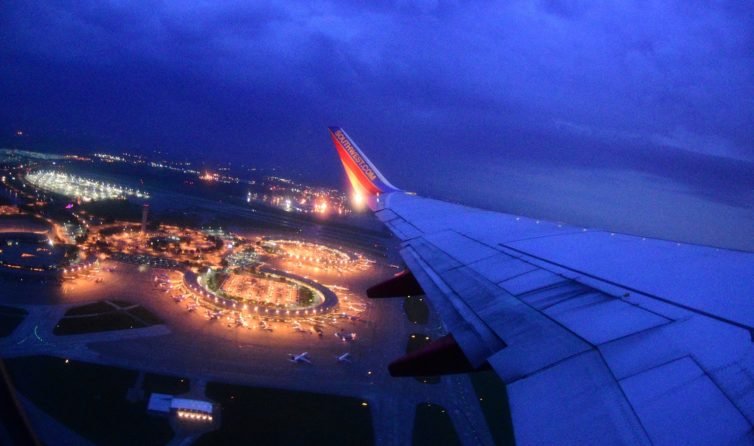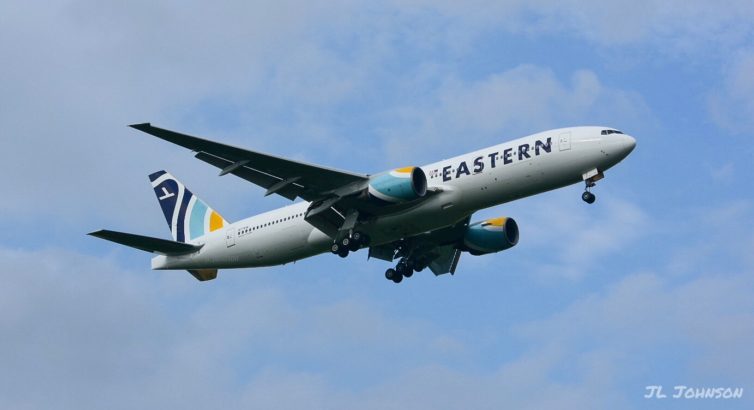It has been three-hundred and ninety days since I last flew. That flight was as routine as possible: Southwest Airlines from Chicago Midway back to Kansas City, concluding a standard trip to visit with business partners. At the time, there was some concern over risks of a pandemic but the topic wasn’t a worry for most. Headlines of the day were about the Iowa caucuses, Trump’s first impeachment hearing, and a Pegasus 737 sliding off the runway in Istanbul. 2020 was going to be an incredible year for travel, both for the work -and- personal varieties. We all know how that turned out. Like many, I decided that flying during a global pandemic was not a good idea. Shortly after, my employer instituted an outright ban on travel. Events across the board were canceled and Delta parked a sizable chunk of their fleet on one of Kansas City’s runways.
My reasons to not travel were varied. Back in November, David cared for most of them. If you haven’t read his piece, I would recommend starting there because this is a sort of follow-up. Go ahead and click, we’ve got it set up to open in a new tab for your convenience. One crucial piece that I think David left out was that I don’t believe either of us were particularly concerned about *our* health, but the risk of contracting and unknowingly spreading to others. That is an important part of the narrative which I think has been missing from the conversation. I am not worried about me. I am worried about my wife, my son, my son’s teacher, his schoolmates, their families… Public health is less about the individual, and more about the population. My decision to not fly was not about me, it was a selfless one.
But now I’m ready to fly! What has changed? Click read more and let’s get into it.
Why I’m ready to fly
This past Friday, I received my second dose of the Pfizer-BioNTech COVID-19 vaccine. According to the CDC this vaccine was 95% effective at preventing laboratory-confirmed COVID-19 illness. It’s also nearly perfect at preventing the most serious outcomes of COVID – hospitalizations and deaths. The vaccine, paired with continued social distancing and mask wearing offers the peace of mind I have long desired. Now, as I ease back into travel after over a year hiatus, I can do so without doubt and risk of transmitting a deadly disease to friends, family, and the communities I engage with.
Prior to the pandemic, I routinely flew enough to earn Southwest Airlines A-List status, and sometimes unlocked status on other airlines as well. A typical year for me would average around two trips per month spread between work/personal and AirlineReporter events. While I am excited to get back out there, I seriously doubt my travel will rebound to pre-pandemic levels. That said, I believe there is a significant pent-up demand for leisure travel which will be unleashed in the coming months as other receive their own vaccines.
I’m ready to fly, how about you?
I recently gave an interview to Slate about my thoughts on travel. During that discussion I noted the positive psychological effect that booking my first pandemic-era trip had on me. People need something to look forward to, particularly following the incredible disappointment that 2020 was. With FDA authorization of the Johnson & Johnson vaccine, there are now three companies cranking out doses at breakneck speeds. Public health experts expect that vaccine “open season” (vaccines for any/all who want them without prerequisite) is just months away. There is a light at the end of the tunnel so long as we all do our best to mitigate spread.
In closing, I offer you a challenge: Make a plan to get vaccinated if you haven’t already. Review tools such as NPR’s state-based vaccine locator and CDC-approved VaccineFinder to determine when you might realistically get your own vaccination. And then book that dream vacation, or routine trip to see family or friends you’ve been considering. Whatever it is, get something on the books to look forward to. And do it before the pent-up demand causes a surge in prices.
2021 will likely be another muted year for travel, but we are excited at the opportunity to get back out there and bring you exciting stories covering the industry we love.



Hi JL! Greetings from a long-time reader.
You said that now that you’ve taken your second vaccine dose, you can travel “without doubt and risk of transmitting a deadly disease to friends, family…”
I have a doubt though… I understand that the COVID-19 vaccination mainly prevents you from getting the serious symptoms associated with it (just like you had written). However, I’ve read that it does not prevent you from being a carrier of the virus & you could still potentially transmit the coronavirus to other people.
I hope someone (Manu?) could please clarify this……..
Howdy, Suraj. First, thanks for reading!
I agree the primary measure/concern is prevention of severe infection and hospitalization. That said, part of that equation is prevention of contracting the disease to begin with. I want to be super clear that I believe the vaccine is part of a multi-pronged approach which still includes mask wearing, distancing, and limited groups. The vaccine is the crucial part that was missing from being able to feel confident in getting back out there. I’ll of course defer to AirlineReporter’s chief medical officer Manu to opine further 🙂
Great article JL. We hope to be traveling again this summer. Covid will still be a concern We have to start living our lives. Our families come first. Thanks for sharing. I sure hope our single terminal KCI will be a success.
Thanks, JL. I work at Southwest Airlines so this is a ray of sunshine for me. Well done. I wish you good health and many travels!
JL – Good article. Some of us have been lucky to get our first vaccine shot and are awaiting our second. I’m taking a month grace period after that before I hit the skies from SEA and have booked my first trip in early May to see my 96 year old dad who lives in ATL. I consider that an essential trip with a reasonable risk profile. Upon return I will take a couple nights at a local hotel, and a PCR test from my employer, to ensure I don’t bring any Covid risk home to others. I think by fall there will be a “hockey stick” of pent up demand so I’m hoping to beat some of that.
Whoops sorry for the late reply, busy times in the hospital.
Suraj you’re correct on all those points. The vaccines significantly reduce the risk of severe disease but there is still a chance you can be infected or at least carry the virus.
As indoor spaces go, airplane cabins are at least somewhat better than your average house / room / restaurant because of the rapid air cycling and filtration. But flying necessitates being inside a space like an airport, which is higher risk space.
The tough thing is that, as much as we know that things last year were awful and that a year from now things will be largely back to normal, there’s going to be a lack of clarity and concrete guidance on exactly what is safe and how to manage risk during these few months now when people are getting vaccinated and things are slowly getting better. Getting data from studies always takes a while, so it’s not like we have up-to-the-minute data on what the risks are right now. If you’re vaccinated it’s definitely LESS risky to fly than it was a few months ago. But there’s still plenty of COVID out there.
If you feel you need to fly, don’t take the risk lightly. Obviously wear a mask, bring some wipes to sanitize surfaces like armrests and tray tables, and monitor the prevalence of COVID in both the place you’re flying from and the place you’re flying to. Obviously don’t fly for relatively low-priority things like mileage runs or for business travel that you think can be replaced easily by a Zoom call. For the rest of the flying you’re considering, you’ll have to decide on a case by case basis. If it helps, if we get most of the country vaccinated on the timeline the government is aiming for, I think that as soon as this summer the risk/benefit balance for flying will shift much more in favor of flying than it has even now. There’s varying degrees of optimism v pessimism in the medical community now. Most of the ICU I’m working in now is still intubated and critically ill COVID patients. But personally I’m optimistic about how things will look in most places by mid summer — at least in the US.